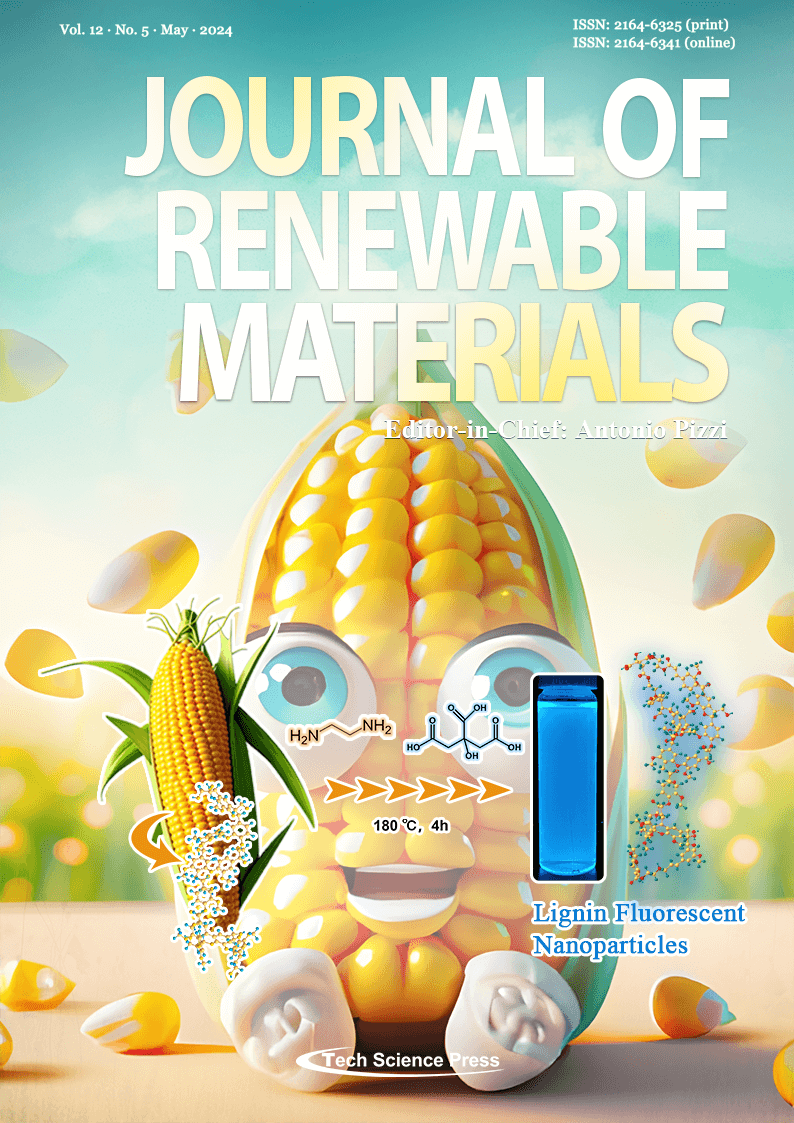Simple and High-Yield Synthesis of a Thinner Layer of Graphenic Carbon from Coconut Shells
Retno Asih1,*, Haniffudin Nurdiansah2, Mochamad Zainuri1, Deni S. Khaerudini3,4, Angelinus T. Setiawan4, A. Y. Dias4, Pudji Untoro4,5, Ahmad Sholih1, Darminto1,*
Journal of Renewable Materials, Vol.12, No.5, pp. 969-979, 2024, DOI:10.32604/jrm.2024.049097
- 17 July 2024
(This article belongs to the Special Issue: Special Issue in Celebration of JRM 10 Years)
Abstract Biomass has become of recent interest as a raw material for ‘green’ graphenic carbon (GC) since it promotes an environmentally friendly approach. Here, we investigate a single pyrolysis route to synthesize GC from coconut shells which provides a simple method and can produce a high yield, thus being convenient for large-scale production. The pyrolysis involves a stepped holding process at 350°C for 1 h and at 650°C or 900°C for 3 h. The GC sample resulted at the 900°C pyrolysis has a thinner sheet, a less porous structure, a higher C/O ratio, and an enhanced More >
Graphic Abstract
